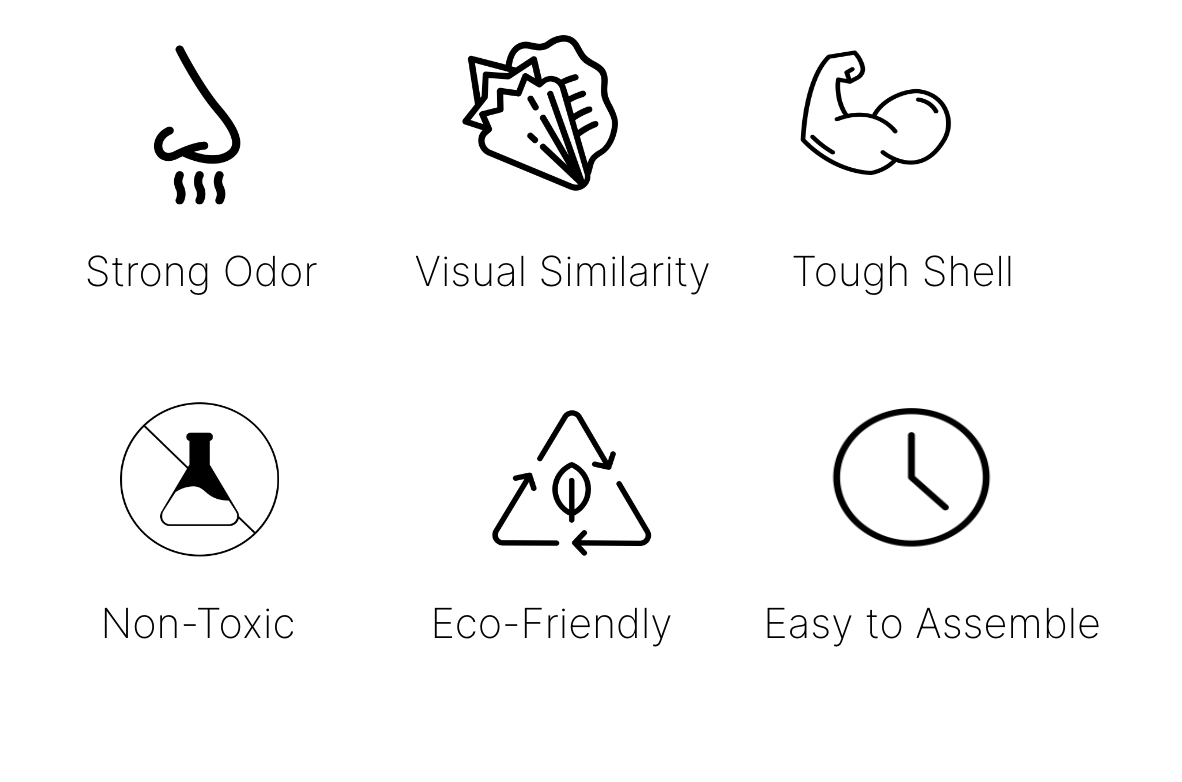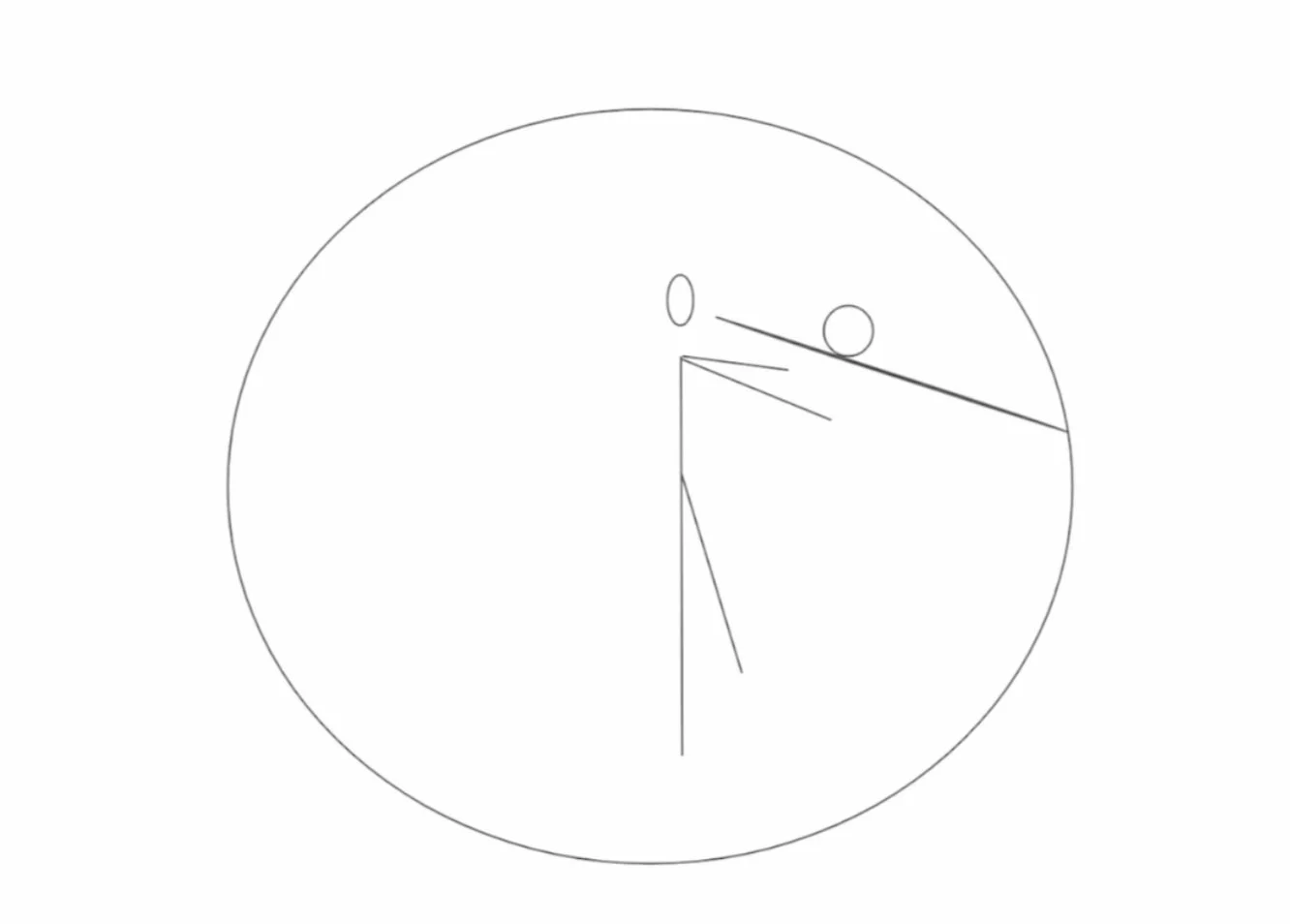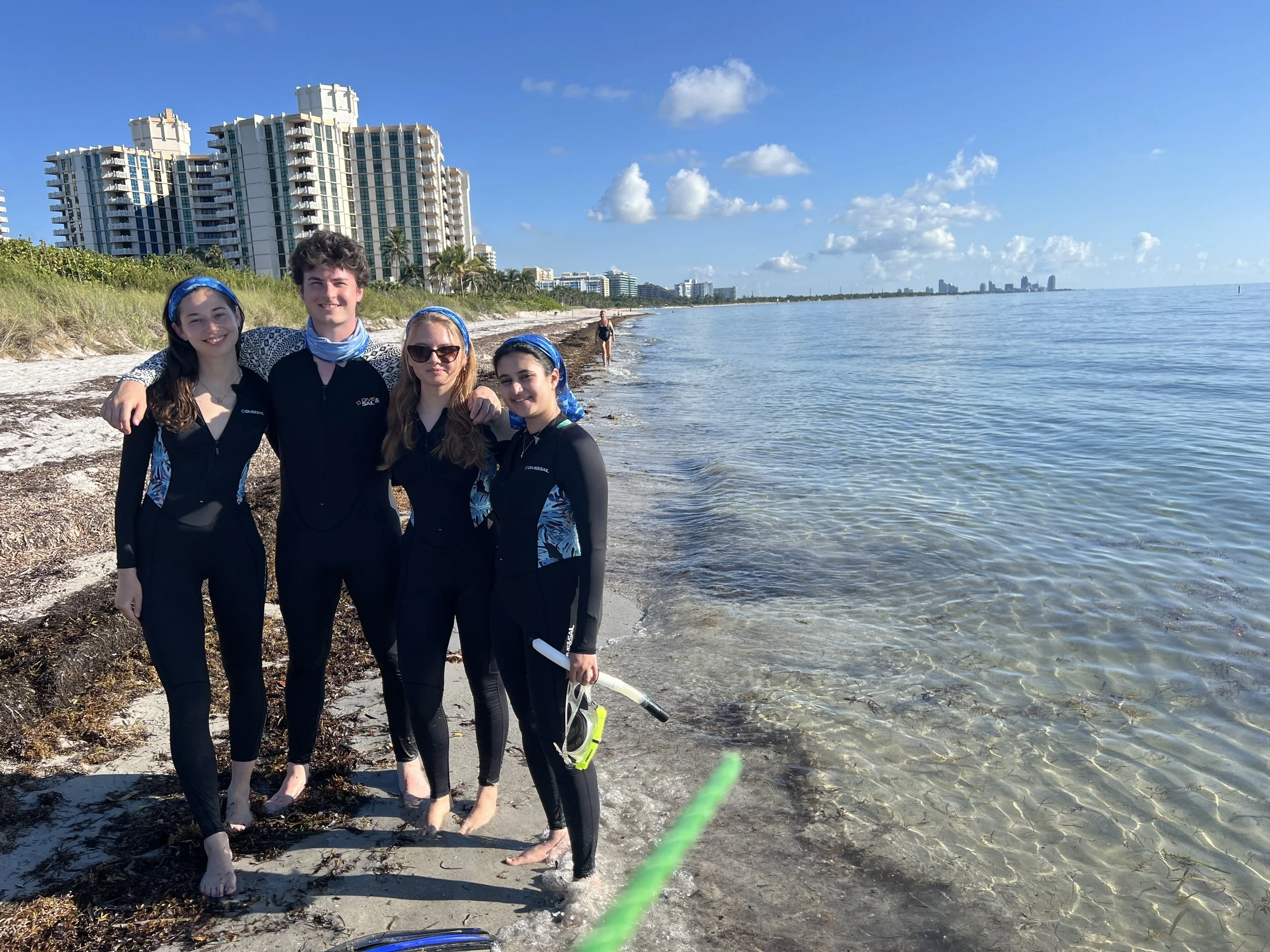InteractiON Design
GastroPop
09.2023 - 06.2024
IMAGE CREDIT: SHEDD AQUARIUM/DR ANDY KOUGH
clientShedd Aquarium
Research
Design Sketching
Client Communication
Prototyping
Fabrication
Testing
skills
Hajra Malik
Lachlan Stevens
Deniz Yoruk
team membersthe brief
Stingray
Loggerhead Turtle
Japanese Spider Crab
Juvenile Queen Conch
Shedd Aquarium approached our team at Northwestern University to design a research tool to measure predation rates on gastropods across reefs in the Caribbean and Florida. Predation rates are used as an exploratory tool to measure ecosystem health, and the effects of conservation efforts. However, gastropods - specifically juvenile queen conch - are threatened under the Endangered Species Act. Shedd Aquarium wanted a replicable way to measure predation rates without harming any endangered species.
Therefore, our team designed an artificial juvenile queen conch to sustainably simulate naturalistic predation.
the design
Shell
Bait
GastroPop is a two-part shell bait system that is attractive to common predators
of the juvenile queen conch, including lobsters, crabs, and stingrays. To provide a clear record of interactions, the bait can only be removed if the predator manually extracts it, or breaks the shell.
The shell is made of oyster shells, and the bait consists of dried shrimp and squid.
Both are held together with sodium alginate - a popular ingredient in molecular gastronomy. All materials can be ingested by animals, and are safe for the environment - even if they are left behind in the ocean.
With four ingredients and standardized molds, the system is replicable, cost efficient, and easy to assemble.
START WITH A QUESTION
How do we create an artificial juvenile conch shell that shows researchers how real ones are eaten?
And ask some more
Journey Map
Assemble Bait
Place Bait at Sites
Observe Interactions
Collect Shells
Analyze Footage
Synthesize
Key Requirements
Observe
What does the caribbean spiny lobster think?
CREDIT: SHEDD AQUARIUM/DR ANDY KOUGH
Flicking Small Antennules for
Smell Perception
Informed by research findings, we formulated several safe, sustainable bait options made out of squid, shrimp, and sodium alginate.
We presented the baits to the Caribbean Spiny Lobster at Shedd Aquarium to observe which options were attractive to marine animals. I created a behavioral coding system to understand how the lobster perceived each option.
CREDIT: SHEDD AQUARIUM/DR ANDY KOUGH
Spiny Lobster Eating Bait for Taste
Iterate, iterate, iterate


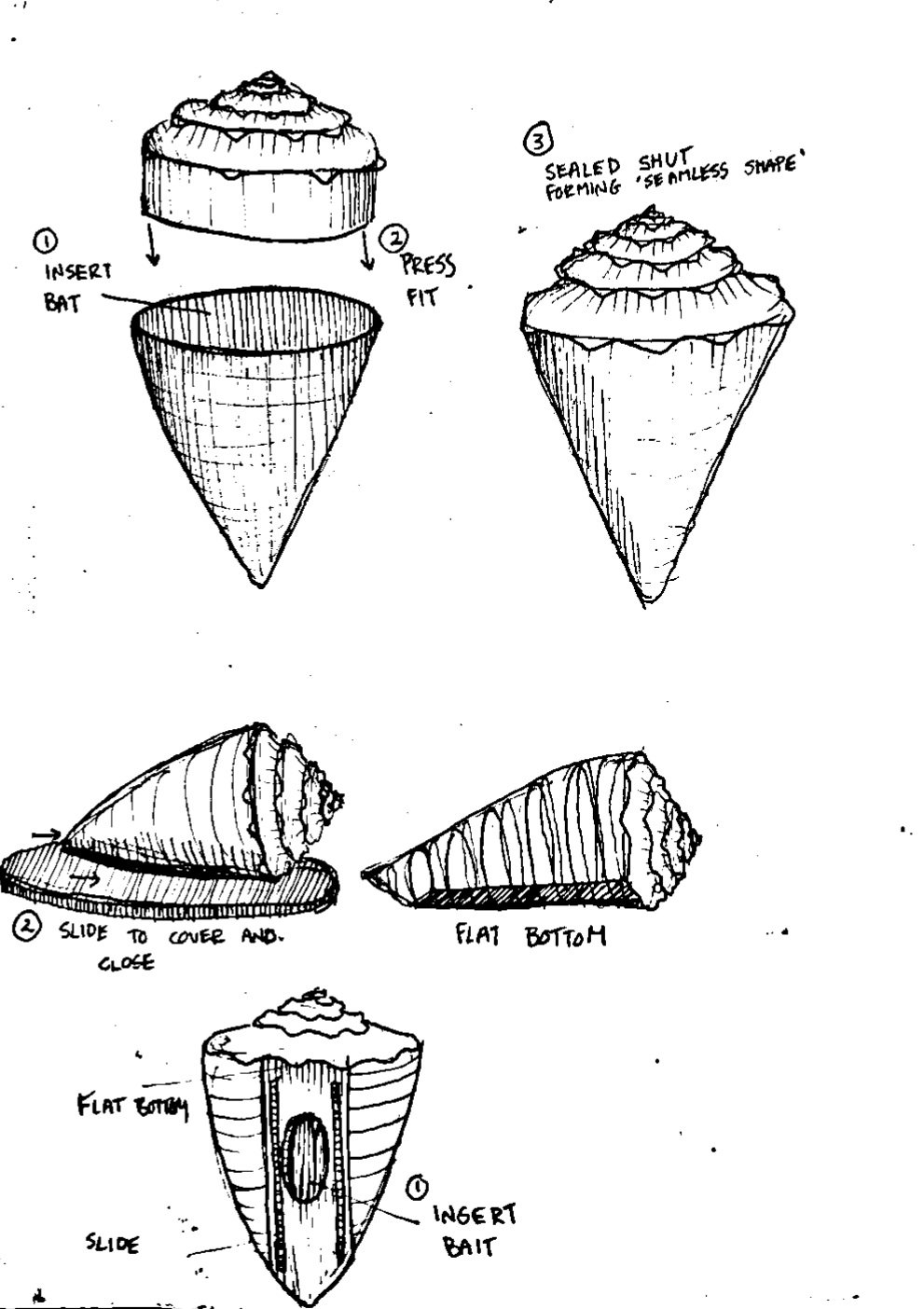



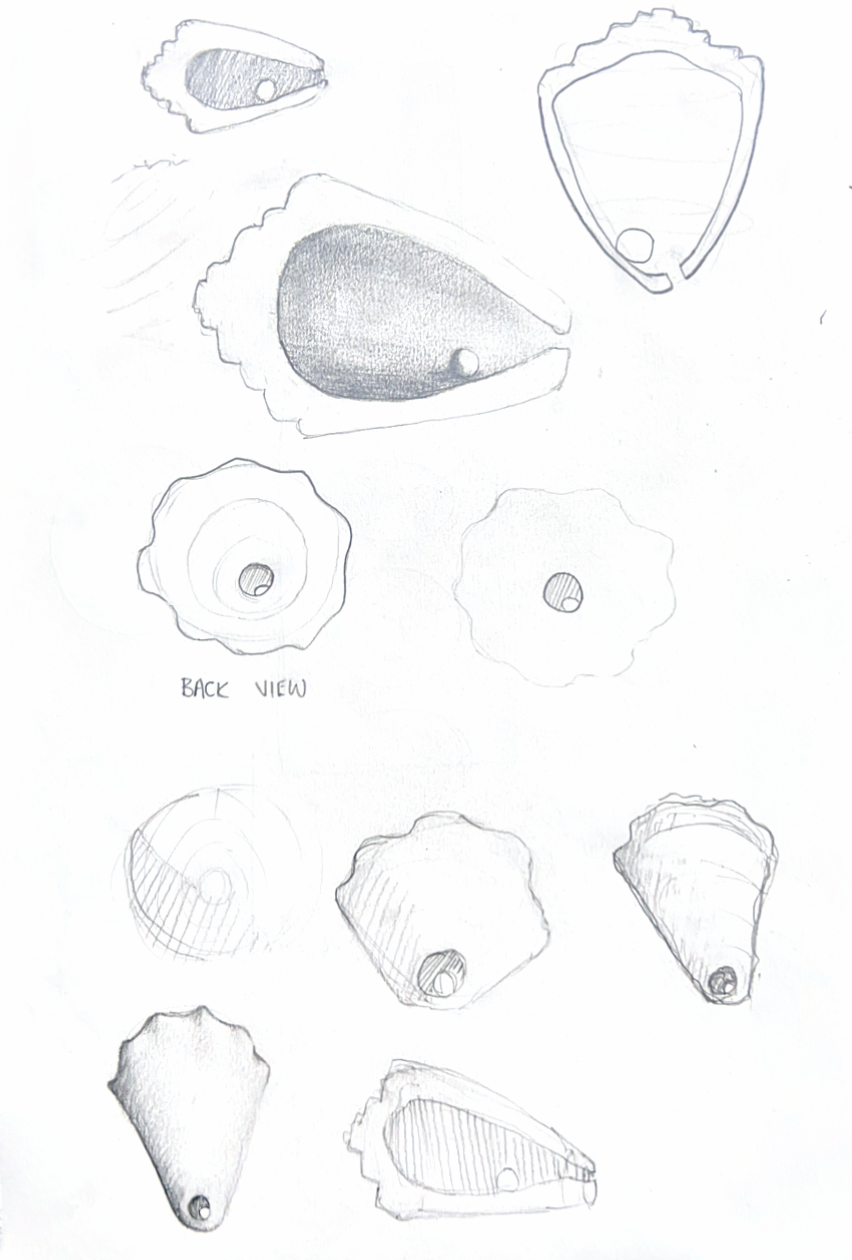


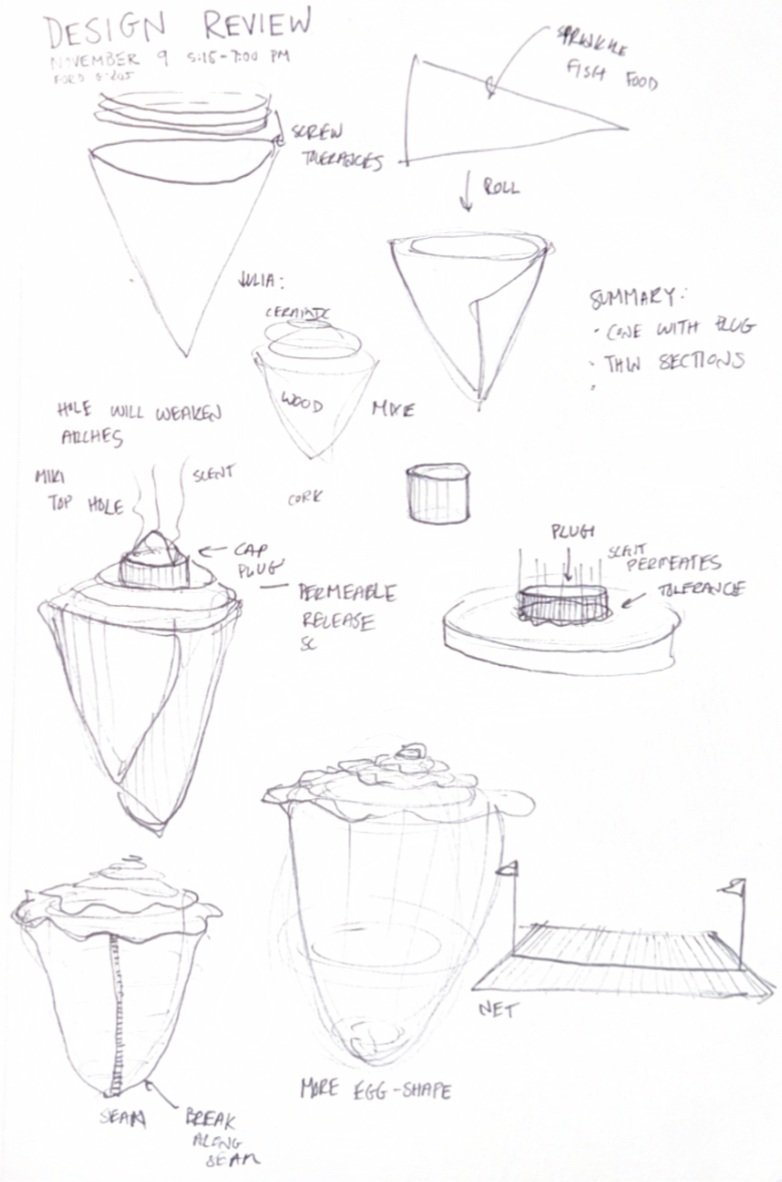






interaction
Shedd Aquarium’s Carribean Spiny Lobster can be seen manipulating GastroPop the same way it would interact with a real juvenile queen conch shell, demonstrating what Dr. Kough considered to be a successful interaction.
GastroPop
VIDEO CREDIT: SHEDD AQUARIUM/DR ANDY KOUGH
VIDEO CREDIT: FAU HARBOR BRANCH OCEANOGRAPHIC INSTITUTE
Real Conch Shell
In the Field
Through the Norman Fund Human-Centered Design Grant, our team was lucky enough to travel to Key Biscayne, Florida to see how GastroPops fare in the field.
Assemble GastroPops
Place GastroPops at Sites
Collect Shells
Observe Interactions
Analyze Footage
From this trip, our team found significant differences in predation rates depending on the environment the shell was placed along the coastline. Additionally, the patterns of breakage provided insight into which predators consumed the bait even when the cameras didn’t capture it. These preliminary findings demonstrated that GastroPops can be utilized to record data across multiple variables for further analysis.
In the Media
The Team
IMAGE CREDIT: ANDY KOUGH
I have been lucky enough to be a part of a cohesive, diligent, and hardworking team. Each member of the team has worked with drive, curiosity, and determination to contribute to the success of this project. However, over these two quarters our team had a culture of open communication, trust, and ultimately, a friendship that will carry on well after the project is over. We each approached the project with very different interests and expertise. Deniz is a Chemical Engineering major, Lachlan is studying Manufacturing and Design Engineering, and Hajra is studying Civil Engineering and Architecture. Each member of the team saw the project with different eyes, and through communication and collaboration, we were able to harness that as our greatest strength.
Acknowledgements
Our team is deeply thankful for the immense support we received from Dr. Andy Kough and Shedd Aquarium for making this project possible, and so much fun. We would also like to say thank you to our advisors Professor Stacy Benjamin and John Anderson for their invaluable support and advice throughout the design process. And lastly, a special thanks to everyone who took the time to meet with us and provide us with guidance and insight over the course of this project. None of this would have been possible without your expertise and generosity.
Win Reynolds
Mark Schumacher
Becca Greenstein
Carla Shute
Malcolm MacIver
Bruce Ankenman
Scott Beveridge
Derk Joester
Markos Georgiou
Fish Mart Bait Shop
HMart













